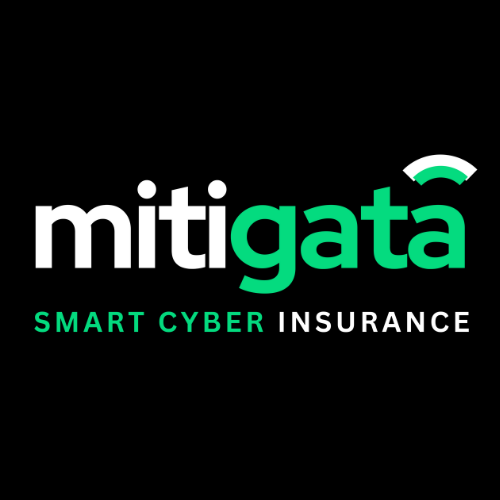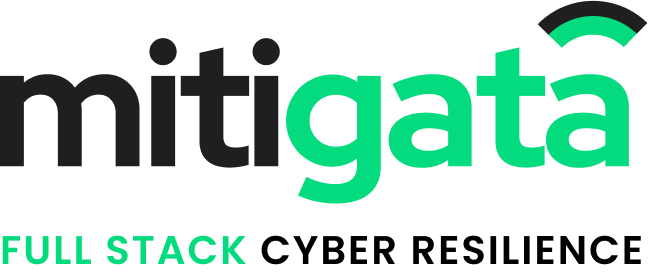Best XDR Tools for 2025: You Need to Know Them
Cyberattacks aren’t slowing down. They’re getting faster, wiser, and more frequent.
In 2023, the global XDR market was valued at $1.7 billion. By 2028, it’s set to increase to $8.8 billion. That’s not just growth — it’s a response to rising threats that demand real-time detection, faster response, and smarter security.
In 2024, healthcare became the most targeted sector in the country. Hospitals, clinics, and medical data are all under fire, and basic tools are no longer sufficient.
What’s the solution?
A unified platform of Extended Detection and Response, which comprises multiple tools like SIEM (Security Information and Event Management), NDR (Network Detection and Response), EDR (Endpoint Detection and Response), and real-time threat intelligence
Why is Mitigata Your Top-Notch Choice for XDR Solution?
Choosing the right XDR tool isn’t about picking a tool. It’s about having the right team behind it.
Mitigata is India’s first full-stack cyber resilience company, built to help you stay protected with innovative, integrated XDR solutions.
Here’s why businesses choose us:
1. Expert-Led Guidance: : We offer tailored consultations to help you select the XDR platform that aligns with your business needs and risk profile.
2. Custom-Fit Solutions:
Whether you need open XDR or a robust, enterprise-grade platform, we provide solutions tailored to your environment.
3. Smooth Integration: Our platforms integrate seamlessly with your existing tools, including SIEM, EDR, and other security systems, ensuring a streamlined setup.
4. 24/7 Support:
Our cybersecurity professionals are available 24/7 to monitor threats and provide real-time assistance when it matters most.
5. Cost-Effective Protection: We deliver industry-leading XDR solutions at competitive pricing without compromising on performance or reliability.
Full-Coverage XDR at Just ₹1,200/Device*
Trusted by 800+ fast-growing businesses and backed by top-tier partners — we give what’s best for you.

Top 10 XDR Solutions of 2025
Check out our list of the top XDR solutions for 2025.
1. CrowdStrike’s Falcon Insight XDR

CrowdStrike’s Falcon Insight XDR is a cloud-native, AI-powered solution used by large enterprises to perform real-time threat detection and incident response against cyber threats. It combines advanced XDR tools with threat intelligence to provide complete protection of cloud workloads, endpoints, and beyond.
Key features:
- AI-powered threat detection and behavior analysis
- Minimal device impact with a lightweight agent
- Centralised dashboard for seamless incident tracking
- Automated response capabilities to accelerate threat mitigation
2. Palo Alto Networks Cortex XDR

Palo Alto Networks’ Cortex XDR is an integrated security platform that offers modern defense for the cloud, endpoints, and network. It provides a system that reacts and adjusts in real-time to changing threats by leveraging the strengths of XDR, analytics, and machine learning.
Key features:
- Cross-platform protection (endpoint, network, cloud)
- AI-based detection and automatic response
- Seamless integration with other Palo Alto security products
- Centralized visibility with detailed reporting and threat analytics
3. Trellix XDR

Trellix XDR stands out with its extensive integration capabilities, offering over 450 integrations out of the box and 800+ if combined with Enterprise Service Manager (ESM). Trellix XDR works for both on-premise and cloud environments, making it a flexible choice for businesses with different security needs.
Key features:
- 450+ integrations with third-party applications
- Cloud Connect tool for seamless data ingestion
- Actionable insights with over 120 integrations for response actions
- Scalable architecture for both on-premise and cloud environments
Are you looking to strengthen your business’s compliance? Explore our Compliance Services and get tailored solutions to protect your business today!
4. Trend Micro Vision One XDR

Trend Micro Vision One XDR is an all-in-one EDR and XDR tool, highly effective in diagnosing and blocking ransomware and malware attacks. This tool provides visibility at the endpoint, server, and workload levels, helping organizations to identify and respond to threats faster and accurately.
Key features:
- Active monitoring on the endpoint, server, and workload
- Ability to detect ransomware and provide alerts in real-time
- Centralised threat intelligence and automated response
- Fully supportive of hybrid IT environments
5.Seceon AIOps XDR

Seceon AIOps XDR combines AI and machine learning to provide continuous monitoring, detection, and automated remediation. Seceon is easy to use with fast onboarding capabilities. Seceon offers XDR Security with intelligent risk prioritisation and rapid incident response.
Key features:
- Real-time detection with automated risk remediation
- AI-driven threat intelligence to detect threats
- Centralized management console to improve user experience
- Seamless integration with existing IT infrastructure
Get XDR Launch in Days, Not Weeks/Months
We get you top-rated XDR tools at best prices. Save time and get your free demo NOW.

6. Gurucul Open XDR

Gurucul Open XDR is designed for organizations that need a flexible, open-source approach to extended detection and response. Its open architecture supports seamless integration with third-party security tools, allowing businesses to build a robust security ecosystem without disrupting their existing infrastructure.
Key features:
- Open-source design with customisable integration
- Behavioral analytics for early threat detection
- Supports multiple data sources for better threat visibility
- Scalable across various business sizes and security environments
7. Fortinet FortiXDR

Fortinet’s FortiXDR is recognized for its integrated threat detection and response system that spans endpoints, networks, and clouds. It provides a platform for businesses to unify their threat management systems, offering complete coverage with faster responses.
Key features:
- Real-time cloud, network, and endpoint threat detection
- A single dashboard and centralized administration
- AI-powered incident response and automated actions
- Seamless integration with Fortinet’s broader security ecosystem
Check out these SIEM Tools making wonders in Indian Businesses
8. SentinelOne Singularity XDR

SentinelOne Singularity XDR brings detection and response together across your entire environment — from endpoints to the cloud. What sets it apart is its autonomous response engine. It helps security teams spot, investigate, and contain threats fast, with minimal manual input and maximum efficiency.
Key features:
- Single-click solution for automated remediation
- Cross-layer protection for endpoints, clouds, and networks
- Integration with third-party tools, including SIEM and threat intelligence feeds
- Automated workflows to streamline threat management
9. Sophos XDR

Sophos XDR surpasses traditional endpoint protection by providing enhanced visibility into your cloud and network settings. It enhances EDR capabilities to help detect and respond to both known and unknown threats, all from a single unified platform.
Key features:
- Deep visibility into endpoints, cloud, and networks
- Integrated threat intelligence for more accurate detections
- Automated response to minimize security problems in real time
- User-friendly UI with real-time warnings and reporting.
10. CyberReason XDR

Cybereason XDR is a proactive security architecture with multiple layers of protection for endpoints, networks, and cloud environments. It combines real-time intelligence with automation to enable security teams to anticipate threats and determine their response before they develop.
Key features:
- Unified protection across endpoint, network, and cloud
- Built-in threat intelligence with automatic context enrichment
- Real-time detection, analysis, and response
- Easy integration with your existing IT stack
One Solution. All Threats. Zero Guesswork.
End-to-end XDR deployed with expert guidance, top-tier tools, and round-the-clock threat coverage.

Conclusion
Cyberattacks aren’t just evolving, they’re escalating. Basic tools like EDR alone won’t cut it anymore. XDR encompasses everything: endpoints, networks, cloud, and threat intelligence — all under one roof.
At Mitigata, we help you find the right XDR solution tailored to your specific business needs. With the right tech and the right team, staying secure isn’t just possible — it’s proactive.
Ready to upgrade your cybersecurity? Let’s talk.
FAQs on Top 10 XDR Solution Providers in India
Q1. What does XDR mean?
XDR (Extended Detection and Response) is a cybersecurity solution that integrates data from various tools, including EDR, NDR, and SIEM, to detect and respond to threats across endpoints, networks, and cloud environments, providing a comprehensive, real-time defense.
Q2. What is the difference between EDR and XDR?
EDR (Endpoint Detection and Response) focuses on securing individual endpoints, detecting and responding to threats on those devices. XDR (Extended Detection and Response) expands this coverage by integrating data from multiple security layers, including endpoints, networks, and cloud, offering broader protection.
Q3. What is MDR vs XDR?
MDR (Managed Detection and Response) is a service where external experts manage threat detection and response for your organization. XDR (Extended Detection and Response) is a platform that integrates various security tools to detect and respond to threats across multiple layers of your infrastructure.
Q4. How is XDR different from SIEM?
XDR (Extended Detection and Response) integrates threat detection and response across multiple security layers, while SIEM (Security Information and Event Management) primarily focuses on collecting and analyzing log data. XDR automates detection and response, whereas SIEM focuses on event correlation.
Q5. What is XDR and EDR?
XDR (Extended Detection and Response) is a comprehensive security platform that integrates multiple layers of protection, including EDR (Endpoint Detection and Response), which focuses on securing individual endpoints. XDR offers broader coverage, including networks and cloud environments.
Q6. What are the differences between EDR, MDR, EPP, and XDR?
The key differences between EDR, MDR, EPP, and XDR lie in their scope and function. EDR focuses on securing endpoints by detecting and responding to threats on individual devices. MDR is a service that provides continuous threat monitoring and response managed by external security experts. EPP offers prevention capabilities by protecting endpoints from malware and other attacks. XDR integrates multiple security tools, including EDR, SIEM, and NDR, to provide more comprehensive protection.
Q7. What is the difference between EDR and XDR SentinelOne?
SentinelOne EDR focuses on detecting and responding to endpoint threats. SentinelOne XDR, however, integrates endpoint data with network and cloud, providing a more comprehensive, unified approach to threat detection and response.
Q8. What are XDR tools?
XDR tools are security solutions that provide extended threat detection and response by integrating multiple security technologies like EDR, NDR, and SIEM. They offer real-time visibility and automated responses across endpoints, networks, and cloud environments.
Q9. Which XDR is best?
The best XDR solution depends on your organization’s specific needs and infrastructure. Top choices in the market include CrowdStrike Falcon XDR, Palo Alto Networks Cortex XDR, and SentinelOne Singularity XDR, among others. When evaluating XDR platforms, businesses should consider factors such as integration capabilities, ease of use, real-time threat detection, and automation features.
Q10. What is the difference between EDR and XDR tools?
EDR tools focus solely on detecting and responding to endpoint threats, while XDR tools integrate data from multiple security layers, including endpoints, networks, and cloud, providing broader, more effective protection across the entire infrastructure.

